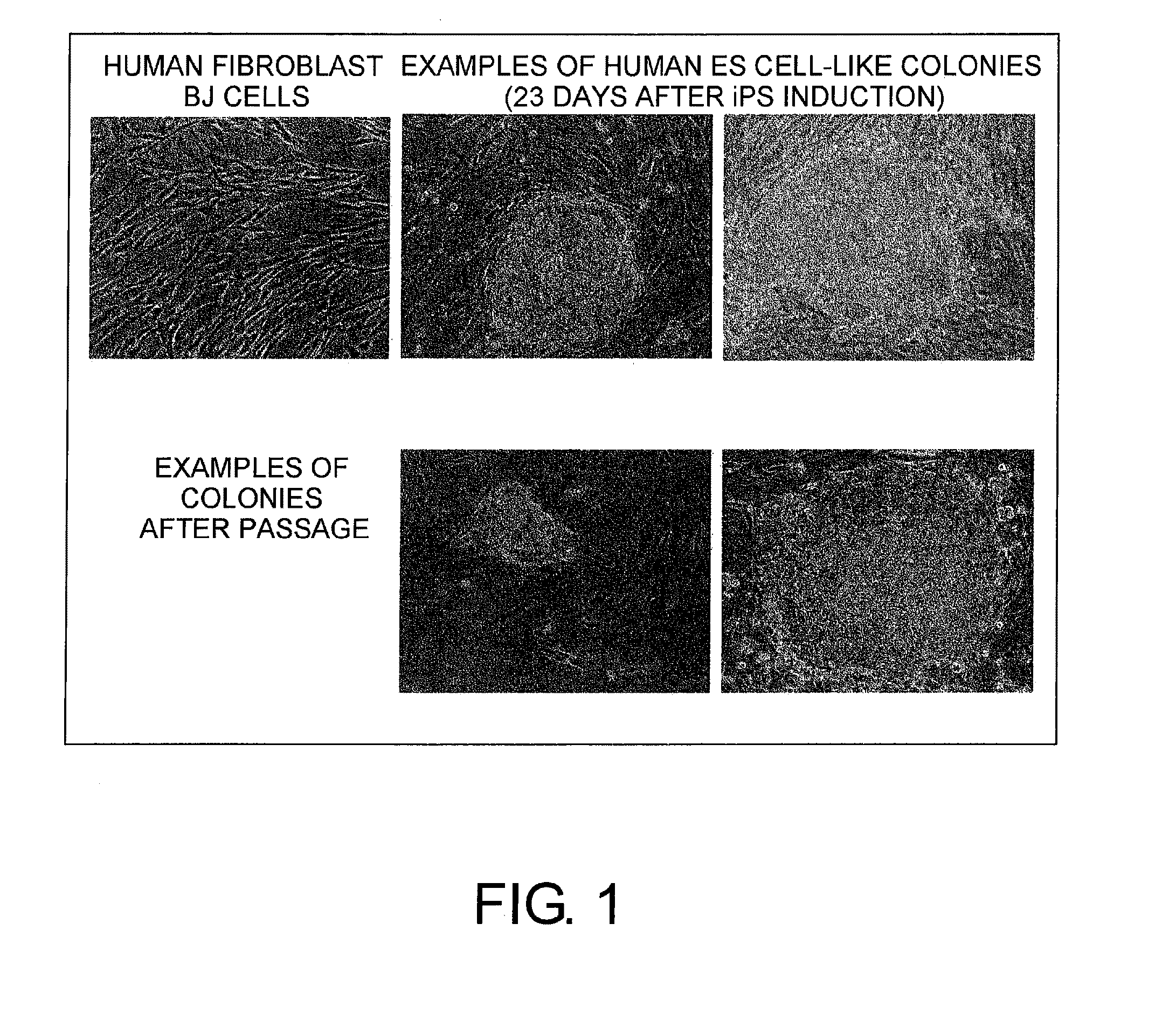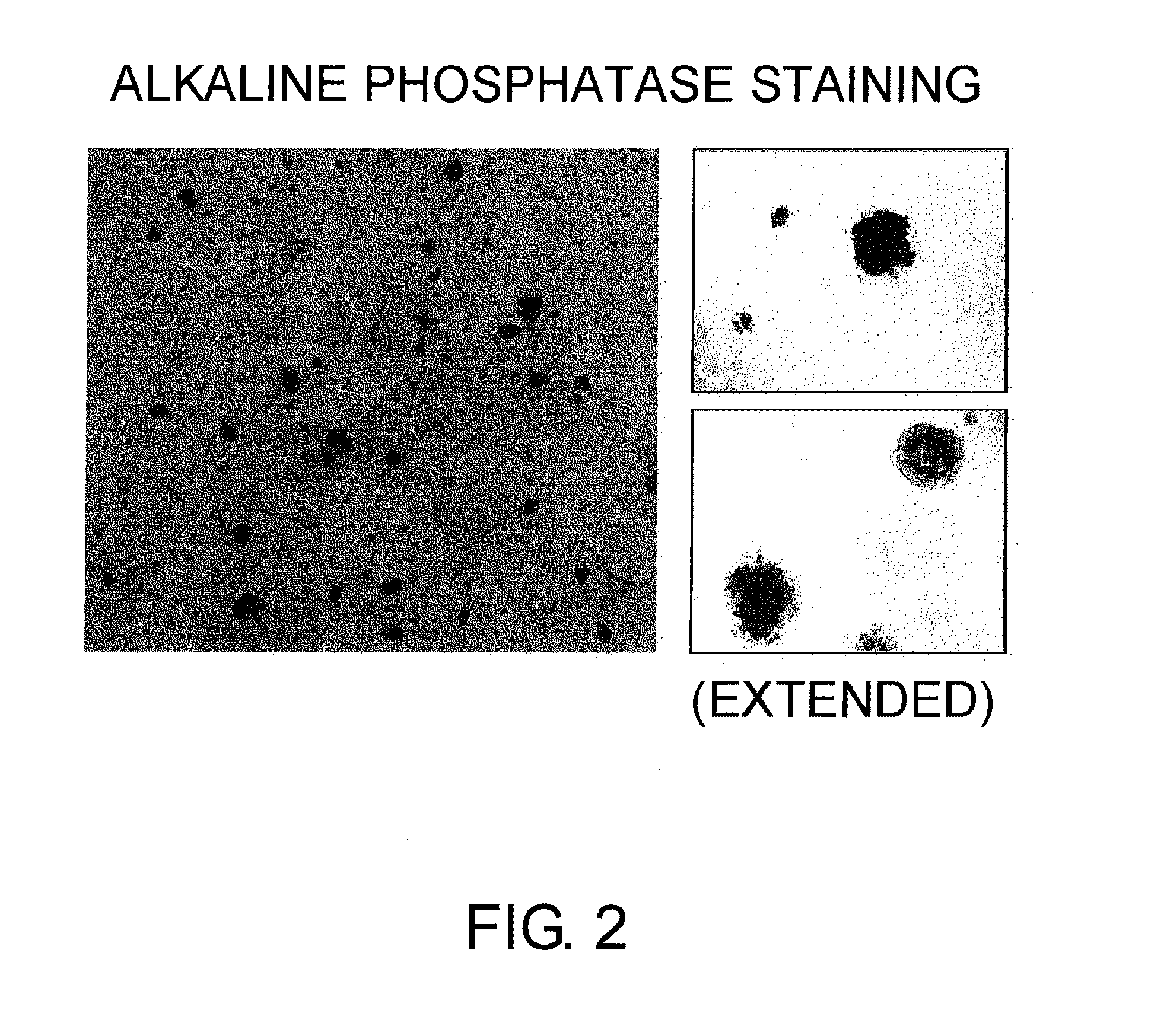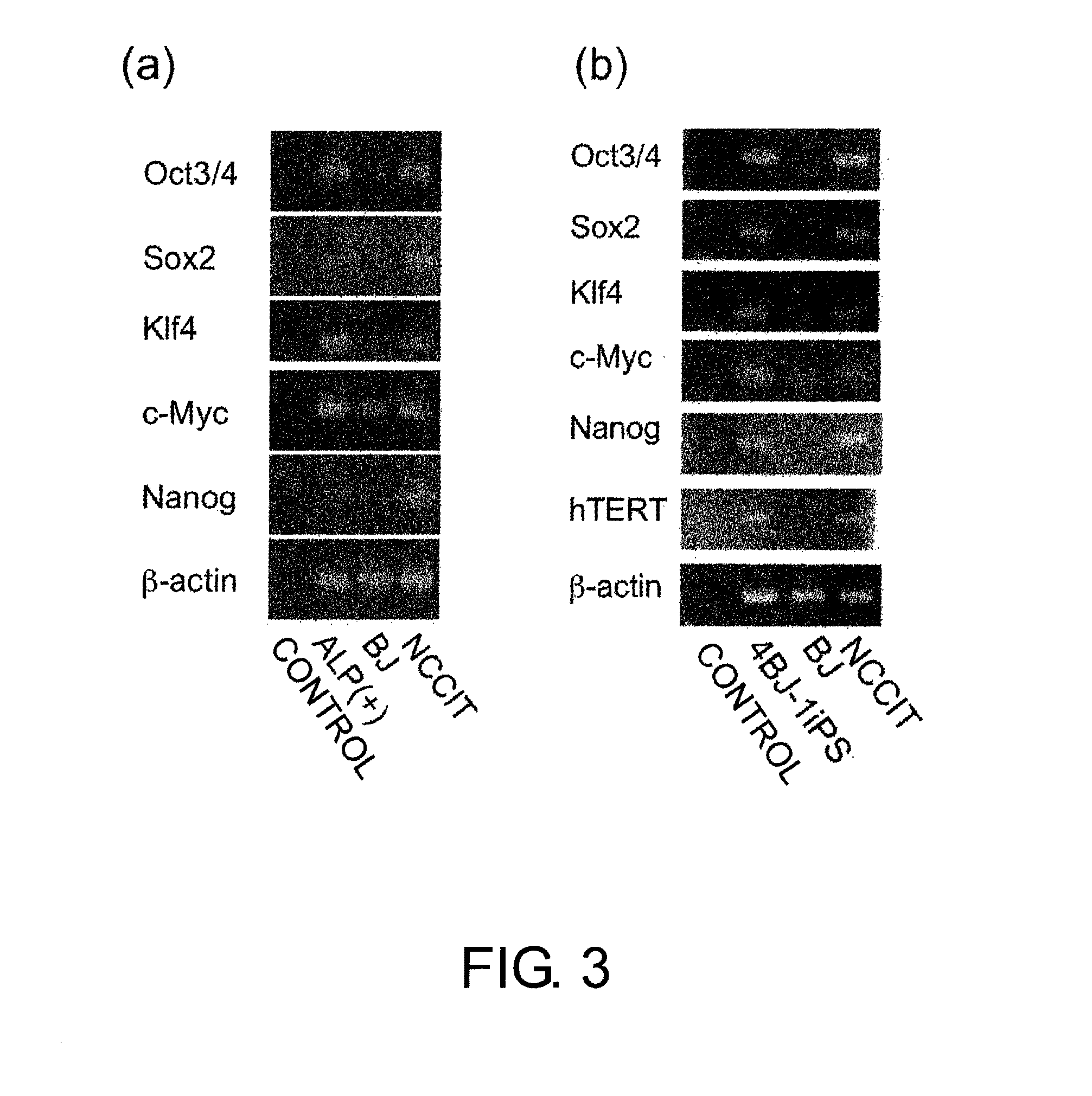Method for production of reprogrammed cell using chromosomally unintegrated virus vector
a virus vector and chromosomal unintegrated technology, applied in the field of methods for producing reprogrammed cells, can solve the problems of immune rejection, difficult to isolate, ethical problems of cells, etc., and achieve the effects of avoiding immune rejection or ethical problems, avoiding the risk of genotoxicity-based transformation, and avoiding unexpected side effects
- Summary
- Abstract
- Description
- Claims
- Application Information
AI Technical Summary
Benefits of technology
Problems solved by technology
Method used
Image
Examples
example 1
Preparation of ES-Like Cells Using Sendai Virus Vectors Carrying Foreign Genes
[0258]First, 8.0×105 cells each of human newborn foreskin-derived fibroblast (BJ) (ATCC (http: / / www.atcc.org); CRL-2522), human adult skin-derived fibroblast (HDF) (Applications, Inc. 106-05A-1388; derived from the cheek of a 36-year-old white female), and human fetal lung cell-derived fibroblast (MRC5; ATCC CCL-171) were cultured in DMEM (GIBCO-BRL, 11995) / 10% FBS (GIBCO-BRL) in a CO2 incubator (0.5% CO2) at 37° C. for one day (DMEM (GIBCO-BRL, 11995) / 10% FBS (GIBCO-BRL)).[0259]After culturing, the vectors of (a) to (d) below were added at an MOI of 3 to the cultured cells.[0260](a) SeV18+Oct3 / 4 / TSΔF vector[0261](b) SeV18+Sox2 / TSΔF vector[0262](c) SeV18+Klf4 / TSΔF vector[0263](d) SeV18 c-Myc / TSΔF vector
[0264]After addition of the above vectors, the medium (DMEM (GIBCO-BRL; 11995) / 10% FBS (GIBCO-BRL)) was exchanged on the next day.
[0265]The cells were cultured in a CO2 incubator (0.5% CO2) at 37° C. for sev...
example 2
Alkaline Phosphatase Staining of Cells Prepared by the Above Initialization Experiment
[0269]The alkaline phosphatase activity, which is an undifferentiated marker for ES cells, was visualized by staining with NBCT / BCIP (PIERCE; NBT / BCIP, 1-Step, #34042). Colonies stained blue, which were positive for alkaline phosphatase, were observed (FIG. 2).
example 3
Assessment of the Expression Levels of Specific Genes in Cells Prepared by the Above Culture
[0270]Multiple alkaline phosphatase-positive colonies (ALP(+)) described above in Example 2 were mixed, and RNA was extracted from them (“ALP(+)” in FIG. 3(a)). Reverse transcription was carried out using random primers. PCR was performed using respective primers (FIG. 3(a)).
[0271]The primer sequences are shown below:
Fw:5′-GATCCTCGGACCTGGCTAAGC-3′(SEQ ID NO: 25)andRv:5′-GCTCCAGCTTCTCCTTCTCCAGC-3′(SEQ ID NO: 26)for Oct3 / 4;Fw:5′-AGCGCTGCACATGAAGGAGCACC-3′(SEQ ID NO: 27)andRv:5′-ATGCGCTGGTTCACGCCCGCGCCCAGG-3′(SEQ ID NO: 28)for Sox2;Fw:5′-GCTGCACACGACTTCCCCCTG-3′(SEQ ID NO: 29)andRv:5′-GGGGATGGAAGCCGGGAGGAAGCGG-3′(SEQ ID NO: 30)for KLF4;Fw:5′-TCTCAACGACAGCAGCTCGC-3′(SEQ ID NO: 31)andRv:5′-CAGGAGCCTGCCTCTTTTCCACAGA-3′(SEQ ID NO: 32)for c-myc;Fw:5′-TACCTCAGCCTCCAGCAGAT-3′(SEQ ID NO: 33)andRv:5′-TGCGTCACACCATTGCTATT-3′(SEQ ID NO: 34)for Nanog;andFw:5′-CAACCGCGAGAAGATGAC-3′(SEQ ID NO: 35)andRv:5′-AGG...
PUM
| Property | Measurement | Unit |
|---|---|---|
| temperature | aaaaa | aaaaa |
| temperature | aaaaa | aaaaa |
| temperature | aaaaa | aaaaa |
Abstract
Description
Claims
Application Information
 Login to View More
Login to View More - R&D
- Intellectual Property
- Life Sciences
- Materials
- Tech Scout
- Unparalleled Data Quality
- Higher Quality Content
- 60% Fewer Hallucinations
Browse by: Latest US Patents, China's latest patents, Technical Efficacy Thesaurus, Application Domain, Technology Topic, Popular Technical Reports.
© 2025 PatSnap. All rights reserved.Legal|Privacy policy|Modern Slavery Act Transparency Statement|Sitemap|About US| Contact US: help@patsnap.com



